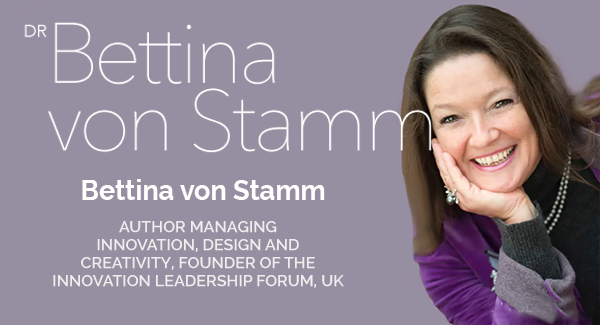The Six ‘I’s® of Innovation
CERTIFICATION & MEMBERSHIP COMMUNITY

Are you ready to take your innovation and leadership development skills to the next level?
Are you looking to become a catalyst for change in an ever-evolving world?
Welcome to The Six 'I's® Certification & Membership Community, your gateway to a transformative journey that will equip you with the expertise and tools to drive innovation, build effective teams, and navigate the challenges of disruption and change. Together, we empower individuals to harness the value of their innovative ideas, advocate diverse thinking, and cultivate more streamlined ways of working.
Why join this community?
In today's fast-paced and competitive landscape, organisations are seeking innovation champions and leaders who can create a culture of innovation, harness the potential of their teams, and shape a purpose-driven future. By becoming Certified in The Six 'I's® Model and assessment tools, you will gain an edge as a trusted innovation and leadership development practitioner that can effect change and get results.
Our unique features:
1. People and Purpose Centred Methodology: Our unique approach places PEOPLE and PURPOSE at the core of innovation. You will learn how to unleash individual strengths, foster collaboration, and align teams towards a shared vision, driving meaningful innovation within organisations.
2. Diverse Toolkit: As a Six 'I's® Certified Practitioner, you will expand your range of profiling tools and methodologies, empowering you to understand, interpret, and apply the Six 'I's® Model effectively. These practical tools will enable you to support individuals, teams, and entire organisations in their innovation journeys.
3. Blended Learning Experience: Our comprehensive programme offers a blended learning experience, combining video training, bi-weekly group coaching calls, peer support, and assessments. This dynamic approach ensures that you stay engaged, motivated, and consistently sharpen your skills.
4. Global Practitioner Community: The learning doesn't stop after Certification. As a Six 'I's® Certified Practitioner, you gain exclusive access to our Six 'I's® Community Membership. Engage in one-hour calls with other certified global practitioners, sharing insights, best practices, and collaborative opportunities.
Our service is composed of three areas of focus:
-
Level One – understanding and applying the Six ‘I’s® Model and individual Profiles - Blended learning that incorporates video training, four bi-weekly coaching calls, peer support and assessments.
-
Level Two – understanding, interpreting, and using The Six ‘I’s® Team Report - Blended learning that incorporates video training, four bi-weekly coaching calls, peer support and assessments.
-
Six 'I's® Community Membership – applying and using The Six ‘I’s® in your professional practice - one-hour calls with members of the Certified Global Practitioner Community.
Embark on a rewarding journey of personal growth and professional impact. Equip yourself with the skills to lead and support innovation, shape purpose-driven teams, and create the future your clients envision.

Finally, a Model that is not linear, with profiling tools that allows everyone to understand where on the innovation journey their strengths and contribution can come into play. The Six ‘I’s® has the unique value of harnessing diversity by bringing processes and stages together with human skills and mindsets which provides an integrated and comprehensive approach to enabling innovation.
This COMMUNITY is best suited for
facilitators, consultants, trainers, practitioners, innovation champions, and managers who are interested in:
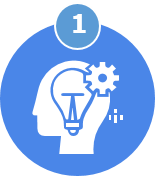
Supporting individuals to understand their innovation strengths and how to develop new skills.
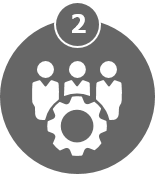
Working with teams to innovate by creating new products, services and processes.
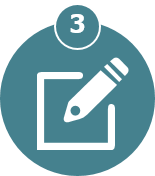
Enabling organisations to create more conducive environments that stimulate innovation – building skills, culture, and capabilities.
The Six 'I's® Learning Portal
THE CONTENT OF YOUR LEARNING JOURNEY
ARE YOU?
Steven Filby
Six ‘I’s® Certified Practitioner
Hong Kong Jockey Club
An innovation champion or leader looking to build innovation capability and culture.
Michael Jenkins
Six ‘I’s® Certified Practitioner
CEO Expert Humans, Singapore
An innovation or leadership development consultant, coach or practitioner who would like to extend your range of profiling tools and methodologies.
Gabriel Helmy
Six ‘I’s® Training Partner
The Capacity Specialists, Cambodia
A training, research or consulting firm that wants to extend its client offering in the field of innovation.
Dr Bettina von Stamm
Six ‘I’s® Certified Practitioner
Founder of The Innovation Leadership Forum, UK & Germany
An educator looking for an innovation skills profile to build into teaching syllabus.
OVERVIEW
There are Two Levels to the Training Component of the Membership Community
LEARNING OBJECTIVES
At the end of Level One and Two, you will be able to apply the Six ‘I’s® at the
Individual, Team, and Organisational Level
LEVEL ONE
Level One focuses on understanding the dynamics of The Six ‘I’s® and how to interpret and apply the Individual Six ‘I’s® Profiles – Standard and Full Reports.

To create a common and shared language for innovation so that everyone knows how they can contribute their talents and how to engage and manage diverse mindsets and skill sets.

To learn the components of The Six ‘I’s® Model and how it is a comprehensive and complete human centred approach to innovation..

To analyse and interpret an individual Six ‘I’s® Standard and Full Report to help someone understand their innovation strengths and areas of development.
LEVEL TWO
Level Two focuses on how to interpret and apply the Six ‘I’s® Team Report and is for participants who would like to go deeper with the application of the Model and Profiles on business and organisational challenges.

To integrate and apply The Six ‘I’s® Individual and Team Profiles on a real innovation case study (mindsets, culture building and leadership development).

To analyse and interpret a Team Six ‘I’s® Report so that a team can understand their collective innovation strengths and areas of development and work out plans of action.

To be equipped to support teams as they progress through the Six ‘I’s® Model on a practical challenge.
a
Each Level includes four 90 minute coaching calls supplemented by asynchronous, pre-recorded content, small-group projects and peer learning.
* Coaching calls are recorded for those who are unable to attend
* Asynchronous and pre-recorded training content is available for the duration of membership
* Small group/peer learning is designed around the geography/time zones of participants
* These prices apply only to direct purchases from this website
Once you have completed your Certification Programme, you will become part of The Six ‘I’s® Global Practitioner Community.
These include one-hour community calls where we cover updates, offer support to each other and share ideas and case studies. The purpose of these calls is embedding learning and help you to apply the Six ‘I’s® in your professional practice.
Programme Timetable
The coaching sessions are for 90 minutes and will be hosted online at 9:30 am WEST/GMT 4:30 pm SGT
Please be aware that after daylight saving (October 26th), times will change in other geographies.
-
Please check your local time zones.
-
In the weeks when there are no formal coaching calls, participants will be expected to arrange peer calls to meet with other participants to discuss their learning and practice interpreting reports.
-
Pairings/groups will be organised at the beginning of the Programme.
-
Including calls, the average time commitment for the Programme is 3-4 hours a week.
-
All coaching calls are recorded for those who are unable to attend.

Timetable (21st Oct - 2nd Dec 2025)
Session 1: 21st October
Session 2: 4th November
Session 3: 18th November
Session 4: 2nd December
Timetable (6th Jan - 17th Feb 2026)
Session 1: 6th January
Session 2: 20th January
Session 3: 3rd February
Session 4: 17th February
At the end of both Level One and Two, you will be able to apply the Six ‘I’s® at the Individual, Team, and Organisational Level.
THE SIX ‘I’s® LEVEL ONE
DISCOVER, LEVERAGE & BUILD INNOVATION CAPABILITIES
Key Benefits of the Individual Profile
For Individuals
Enables individuals to be aware of their strengths and areas of development. This allows individuals to know how they can contribute their strengths and get support when needed. For example, an individual that is strong on IMPLEMENT might never have considered themselves as an innovator. However, without focus and skills around implementation, ideas remain just ‘good ideas’.
For Leaders
A leader’s innovation profile will influence the way innovation projects are supported in the organisation. Awareness of this will help the leader to understand their own style so that they can support all stages of the innovation journey. For example, if a leader is high on IDENTIFY or IGNITE, they may focus on these areas, to the detriment of others, such as the ability to IMPLEMENT new ideas.
THE SIX ‘I’s® LEVEL TWO
DISCOVER, LEVERAGE & BUILD INNOVATION CAPABILITIES
Key Benefits of the TEAM Profile
For TEAMS MEMBERS
Awareness of the team’s collective strength and areas of development can allow them to be aware of their strengths and where other skills might be needed to make an idea work. For example, if a team is collectively high on INVESTIGATE, they are more likely to be over-analysing ideas, without moving them forward into INVEST or IMPLEMENTATION.
For Leaders /
THE ORGANISATION
If leadership team members results are collectively compiled, they will discover how strong they are across each ‘I’ with regards to leadership, culture building and open innovation and collaboration. Leaders can focus on where they need to build systems, processes and culture at the various stages of The Six ‘I’s® to help embed innovation as a core competence.
The Six 'I's® Certified Practitioner Community
OVERVIEW OF YOUR LEARNING COMMUNITY (Post Certification)
The Six ‘I’s® is an Innovation Model for the 4th Industrial Revolution that aligns everyone from the grass-roots level to the C-suite. It helps to give a common language and perspective on why innovation is important. It also helps to ensure that the key success ingredients – culture, process, capabilities are aligned; and people can collaborate and support each other to get results.
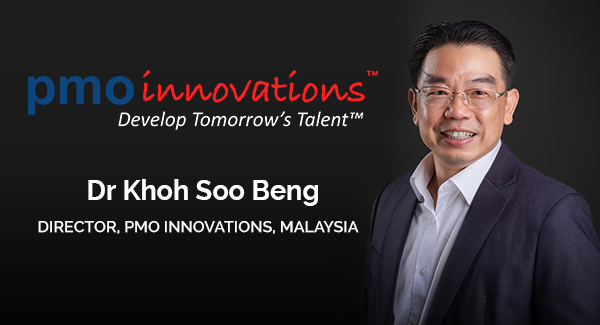
BONUSES

Six ‘I’s® Community Calls
One-hour community calls to learn from other global practitioners and build your practice.
(Value of €600)

Two One-Hour Individual Coaching Calls
To be used within 12 months of completing Level One and Two. This can be used to help with sales, marketing, presentations or other Six ‘I’s® related activities that are unique to you.
(Value of €700)

Ten Six ‘I’s® Standard Reports
For one-to-one feedback sessions or to create Team Reports (below).
(Value of €600)
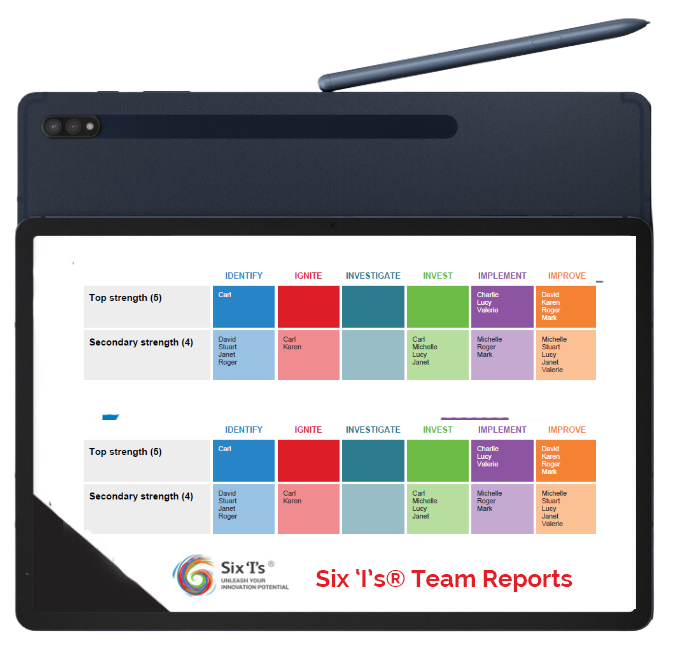
Two Six ‘I’s® Team Reports
Comprised of individual Standard Reports (above).
(Value of €950)
Total Value of Bonuses
€2,850
Certification and
AssesSment Process
Prior to joining the Membership, it is required for participants to read Yes, You Can Innovate and complete their Six ‘I’s® Profile online. Both will be provided on enrollment.
On completion of Level One participants will be required to demonstrate their competence by submitting a recording of them presenting The Six ‘I’s® Model and interpreting a Full Six ‘I’s® Report with an individual through a debriefing session. Participants can select a person of their choice for this activity.
On completion of Level Two participants will be required to demonstrate competence by applying The Six ‘I’s® Team Report with a team and completing a pre-set case Study.
Assessments must be submitted within three months of completing either Level One and Level Two.
For the Assessment Process you will receive:
-
Level One - One Full Report
-
Level Two - Five Standard Reports and One Team Report
- For a team feedback session
- The Team Report is comprised of Five Standard Reports

Additional Benefits Include:
-
Formal, globally recognised Six ‘I’s® Certified Practitioner Status
-
Access to additional, in depth, Six ‘I’s® Full Reports that show an individual’s results within each of The Six ‘I’s®. Only available via Certified Practitioners
-
Six ‘I’s® Taster Module (PowerPoint Slides and Session Plan)
-
Six ‘I’s® Deck of Slides to present to prospective clients or share inside your organisation
-
Become a Member of The Six ‘I’s® Global Community where you will receive sales and marketing support, a community of practice, innovation learnings and much more!

LEARN WITH
NATALIE TURNER
Inventor of The Six ‘I’s® and Author of Yes, You Can Innovate
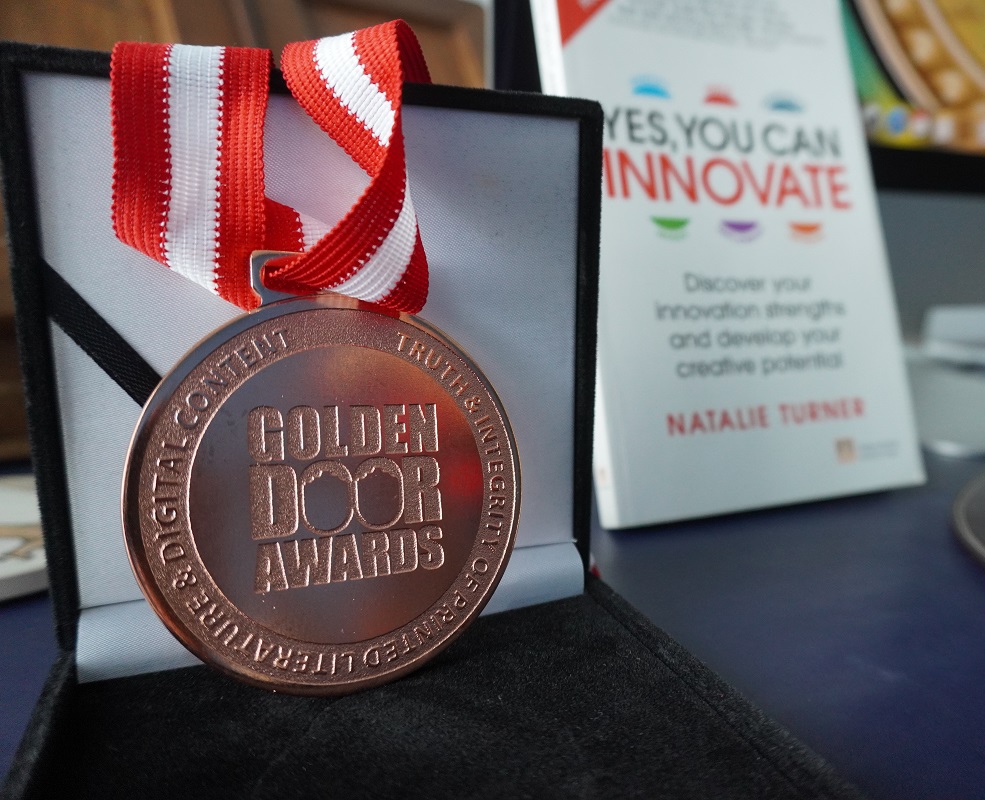
Natalie is a professional speaker, author, coach and catalyst who enables people to bring to life innovations that will change the world for the better. She is a Bronze Medallist from The Golden Door Awards for her book, Yes, You Can Innovate, which was also selected as Business Book of the month in the UK and Singapore.
Natalie creates deeply researched transformational materials that can be practically applied within the workplace. She is the inventor of The Six ‘I’s®, of Innovation, a PEOPLE and PURPOSE centred Model and profiling instrument, that helps people measure their innovation strengths so that they can harness diversity and have a greater impact from new ideas. It also provides a clear journey map to help navigate uncertainty, develop new solutions and make them real.
Natalie is the Founder of the Entheo Network and has worked for and consulted with some of the world’s leading organisations, including Arup, the Singapore Government, Danone, Edgewell and Cisco, helping them build innovation systems, culture and capabilities as well as generating new ideas to help them grow their teams and businesses. An experienced consultant, facilitator and trainer, Natalie has over twenty-five years of experience in professional services, corporate innovation and entrepreneurship.
She is also the Founder of Women who Lead, a retreat and coaching service for female leaders and a contributing author to Unleash Your Voice, Powerful Public Speaking for Everywoman. From the UK, she lives in Lisbon, Portugal. The Entheo Network has been based out of Singapore since 2010.
WATCH NATALIE'S SPEAKER REEL
AS FEATURED IN:
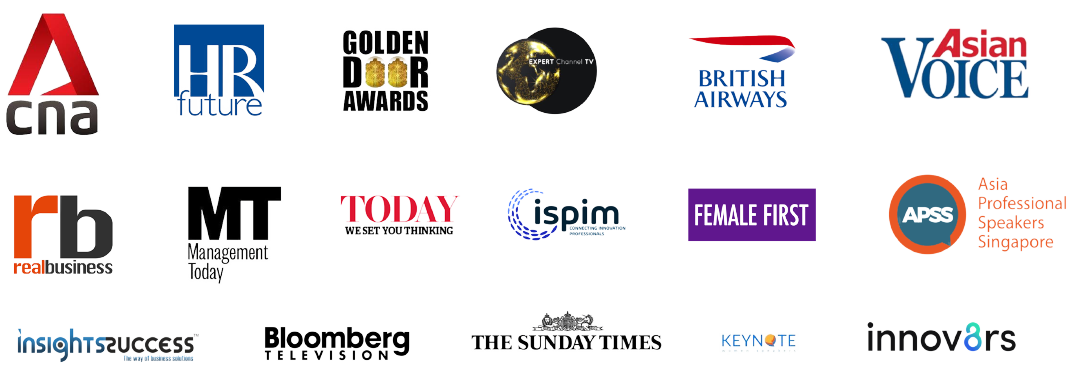
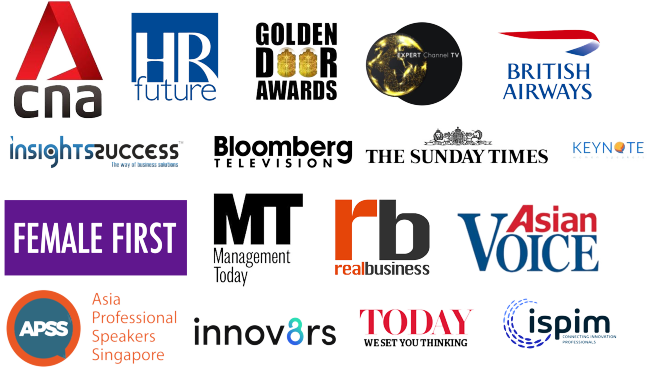
The Six ‘I’s® Yes, You Can Innovate Team Session clarifies not only your own, but everyone’s strengths and role in the innovation process. It was enlightening to understand how we can all contribute to help ensure innovation projects will succeed. We see it as a great tool and method to access how to build a great team and make sure that innovation becomes a reality and not just a great idea on paper.
Helena Eliasson
Head of People and Brand People Solutions
Jenny McCarthy
People Insight, Telia Company
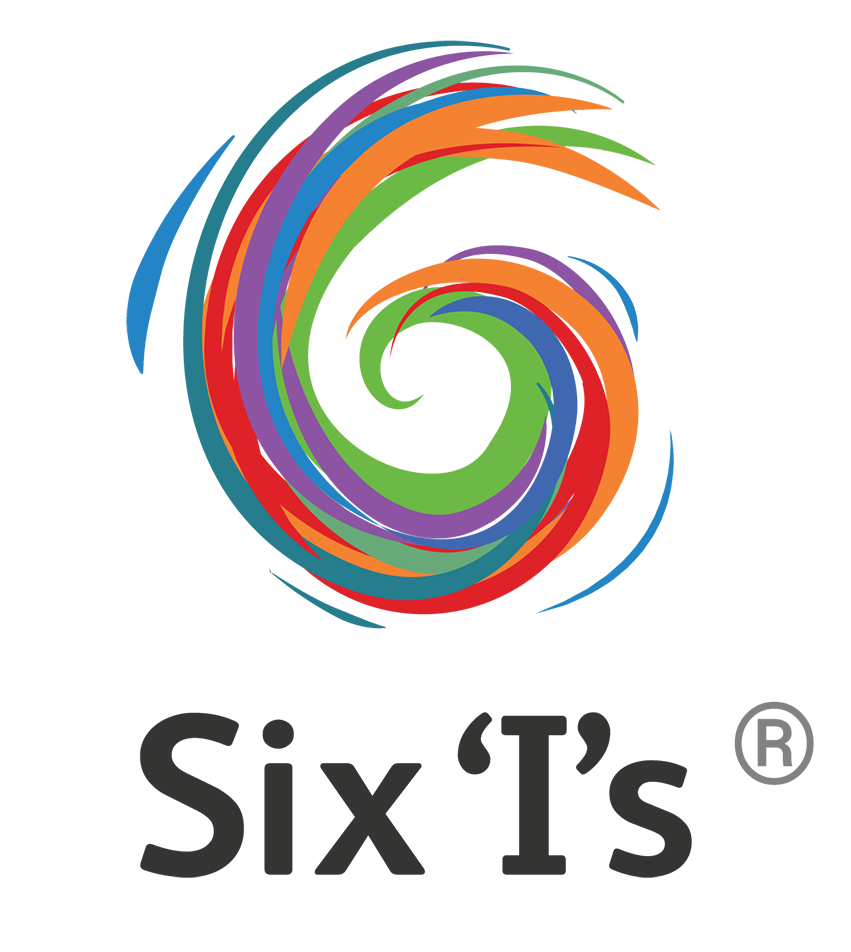
Owned by The Entheo Network, and created by innovation specialist Natalie Turner, The Six ‘I’s® offers a human-centred approach to innovation, blending Design Thinking with organisational development, and a unique proprietary innovation strengths profile for individuals and teams. Its purpose is to give individuals and organisations a consistent framework for measuring innovation skills and capabilities, and an actionable process for developing an innovative and productive working culture.
Statistically reliable, The Six ‘I’s® Profiling Tools were developed in partnership with industry experts and leading thinkers from the areas of innovation and organisational development and have been used in a variety of organisations across the world including the Singapore Government, Cisco Systems, LEO Pharma Asia, GSK and Danone.
The Six ‘I’s® Certification and Membership Community, delivered in the comfort of your own home or office, is designed to equip practitioners and managers with the knowledge, skills, tools and mind-sets to apply The Six ‘I’s® in teams and organisations.
We blend experiential activities with active learning principles to build skills and embed knowledge. It will also enable you to enhance your professional practice by integrating innovation, change management and organisational development.
Building Innovation Capabilities
In this podcast, Natalie is interviewed by Jens Heitland on his show about human centred innovation. They dig deeper into the topic of innovation capability development and use a case study of one specific team to explore this concept further.
Use Cases for The Six ‘I’s®

AT THE INDIVIDUAL LEVEL
- Individual Six ‘I’s® Profiling to help build awareness of innovation strengths and challenges so that people can play to their strengths and know where they need the support of others
- One to one coaching with individuals on their Six ‘I’s® results to help build skills and capabilities to help develop new skills, mindsets and ways of working.

AT THE TEAM LEVEL
- Profiling Teams by using The Six ‘I’s® as a diagnostic tool to understand strengths, challenges and areas of development so that a team can play to its strengths, be aware of blind spots and improve the likelihood of successful outcomes
- Using The Six ‘I’s® Model to facilitate and coach teams to generate ideas, create actions and work out plans for implementation.
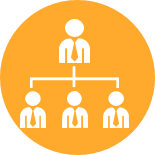
AT THE ORGANISATIONAL LEVEL
- Using profiles to build teams with the right mix of innovation skills so that diversity of mindsets and strengths are harnessed to improve ways of working and delivering value
- Applying The Six ‘I’s® as a diagnostic tool for organisational development to help build innovation as a core capability in the culture of the organisation.
Through designing and facilitating idea generation workshops and on-going coaching and innovation consulting, The Six 'I's helped our organisation develop innovative patient-centred propositions. These have become central pillars of our corporate strategy, helping to drive a 15% uplift in sales across the region.

What Makes The Six ‘I’s® Unique?
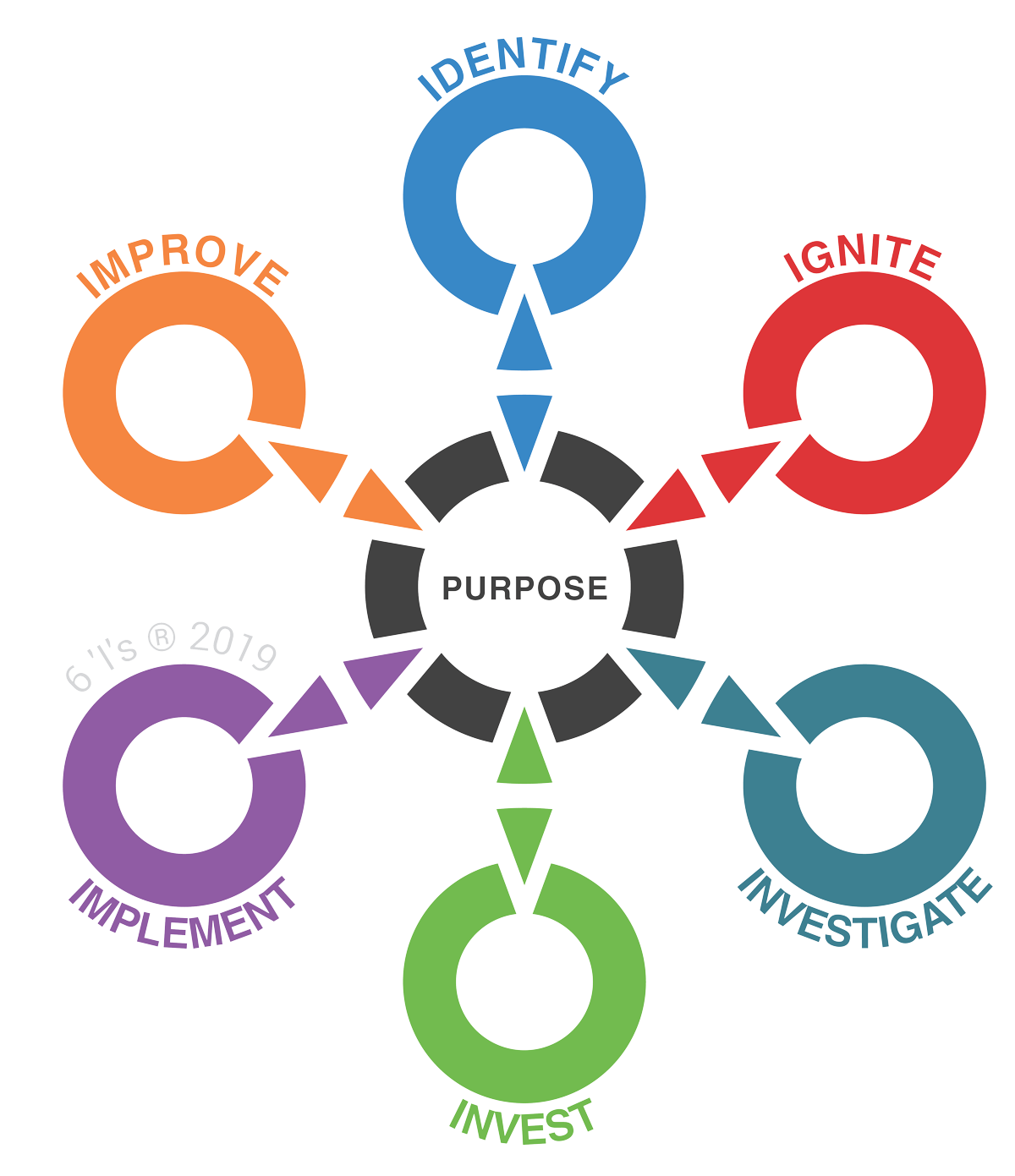
#1 AGILE (Non-Linear) Journey
Innovation journeys are commonly represented by an assumption that innovation starts at the same place, ‘the beginning’. The Six ‘I’s® provides a trailblazing perspective on this, by representing the journey as an inter-connected whole. In reality, innovation efforts can start at any stage, cycle back into PURPOSE, cycle back out, moving backwards and forwards at any time; to eventual value creation.
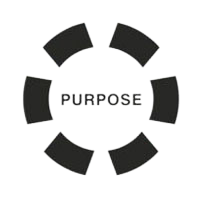
#2 PURPOSE at the Centre
Many processes and models suggest jumping into a challenge (the ‘WHAT’). The Six ‘I’s® breaks the mould by starting at the heart of a challenge …with an exploration of the WHY? The Six ‘I’s® is an innovation MODEL for the 4th Industrial Revolution that encourages sustainability and PURPOSE at its core.

#3 More than just a robust PROCESS
Many innovation models focus only on the process and miss out the equally important component of building systems and policies to support innovation efforts. The two triangles that link PURPOSE to the six stages, symbolise this connection, as innovation efforts often fall apart if they don’t take into consideration culture and ways of working.
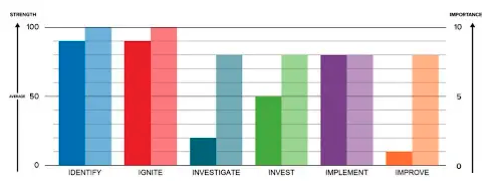
#4 PROFILING TOOLS - Leveraging
Strengths, Building Capabilities
Most innovation efforts are focused on addressing a challenge or seizing an opportunity. Sometimes, innovation efforts fail because the individual or team does not possess the requisite skillset to make an idea work. The Six ‘I’s® profiling tools allow organisations to discover individual and team collective strengths, which enable targeted interventions to leverage strengths and provide support where needed.
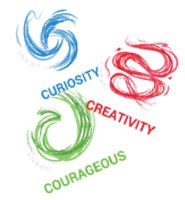
#5 MINDSETS for Innovation
The Six ‘I’s ® is the world’s only Model which incorporates the various mindsets required to innovate. This is a radical breakaway from the idea that a separate, singular mindset is required.
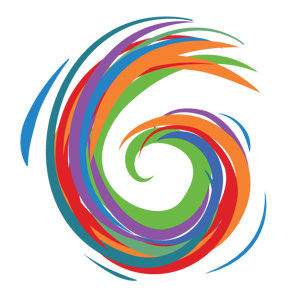
#6 FLEXIBLE ARCHITECTURE
Adopting The Six ‘I’s® does not require a rejection of other systems and approaches. It is a flexible architecture that seamlessly incorporates other tools, methodologies, and ways of working e.g., lean, agile, sprints, design thinking, stage gates, business model canvas, lateral thinking, pitching, and so on….
The 6 ‘I’s® Yes, You Can Innovate Team Session clarifies not only your own, but everyone’s strengths and role in the innovation process. It was enlightening to understand how we can all contribute to help ensure innovation projects will succeed. We see it as a great tool and method to access how to build a great team and make sure that innovation becomes a reality and not just a great idea on paper.
Lee C.
CO-FOUNDER,
BORROW MY GARDEN LTD
What are the Six ‘I’s®?
WATCH THE VIDEOS BELOW AND DISCOVER THE Six ‘I’s®
-
As an IDENTIFIER, my team and I questioned our own mindset towards what we were doing and uncovered an opportunity to try something new. Through applying the 6 'I's®, we grew our market share from 1% to 15%.

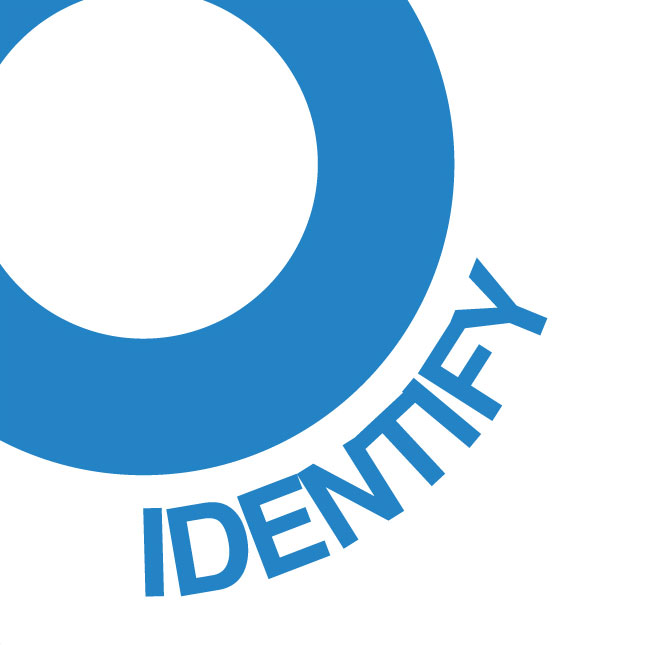
THE IDENTIFIER PROFILE
- Innovation Role – Providing vision, direction and a sense of new possibilities
- Mindset – Curiosity
IDENTIFIER’S Strengths:
-
Visualising and imagining the future
-
Making sense of trends and patterns and thinking about what they might mean for opening fresh opportunities
-
Being forward thinking, strategic and noticing and seeing things that other people don’t
-
Being curious and having lots of different interests and a huge appetite for learning
-
Having a positive outlook on life and seeing opportunities where others see problems
-
Outward looking and interested in the world around them
-
They often seek to add new people, whom they believe will bring new thinking, to their networks.
IDENTIFIER’S CHALLENGES:
As with all strengths, particularly if they are overdone, there can be challenges.
-
As IDENTIFIERS are usually big-picture thinkers, they can often miss the detail
-
Future-orientated, they can lose focus on the present day
-
They can get easily bored if not stimulated by new things, new ideas and new ways of thinking
-
If intellectually driven, they can sometimes be too abstract or conceptual in how they explain things to other people.
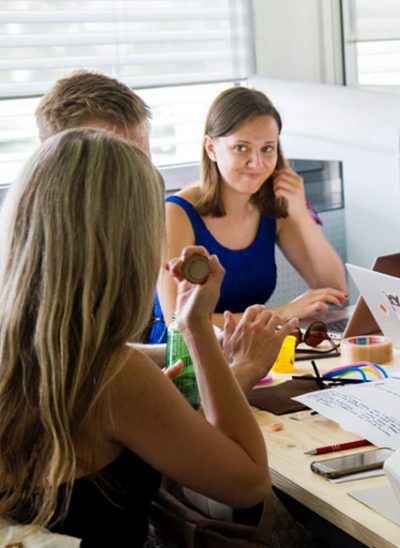
-
As an IGNITER, I generate new ideas… create a team environment for others and... manage the tension between delivering what the business need today, and what it will need tomorrow.
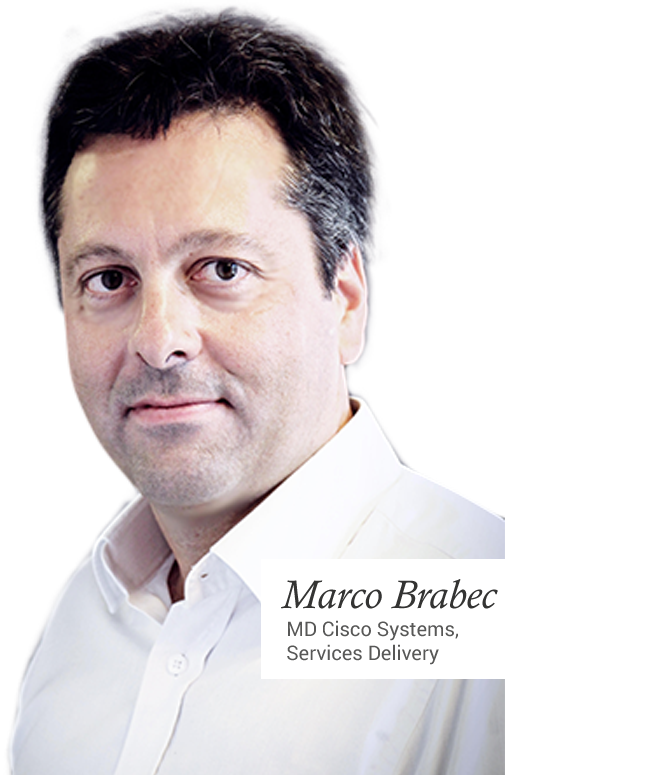
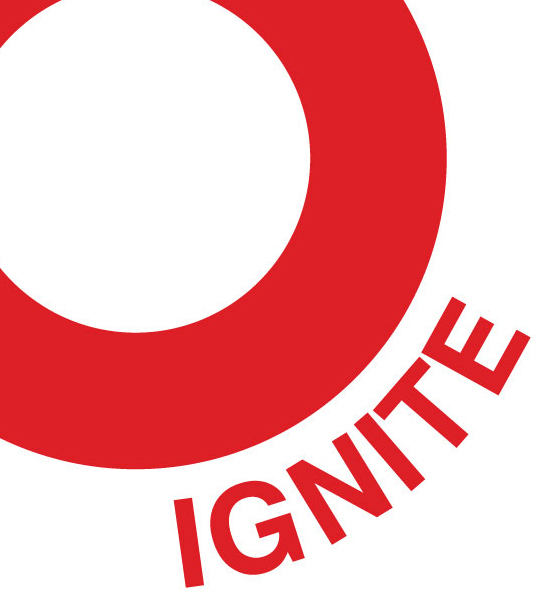
THE IGNITER PROFILE
-
Innovation Role – Providing novelty, freshness and energy for new ideas and a sense of new possibilities
-
Mindset – Creativity
IGNITER'S Strengths:
-
The first to come up with new ideas
-
Good at seeking new knowledge outside their current areas of interest
-
Not afraid of challenging their own thinking as well as that of other people
-
Original thinkers
-
Can see connections between different and unrelated ideas
-
Good at creating a culture where people feel free to contribute their ideas
-
Skilled at motivating and inspiring others.

The swirling image illustrates the mindset of Creativity. The swirl moves backwards and forwards. It is open ended and explorative.
IGNITER’S CHALLENGES:
IGNITERS love to come up with new ideas. Lots of them. But, as with all strengths, there can be challenges:
-
They can become distracted with too many ideas that take them into multiple directions. This can dilute their energy and effectiveness
-
They can get attached to their own ideas and not think through whether they are feasible
-
They can enjoy jumping into action and implementation too quickly
-
They can generate lots of ideas and not see them through into fruition.

-
As an INVESTIGATOR, I listen and take the time to hear the needs of different people. The more you can do this, the more you learn to put aside your own assumptions so you can understand whether an idea will work.
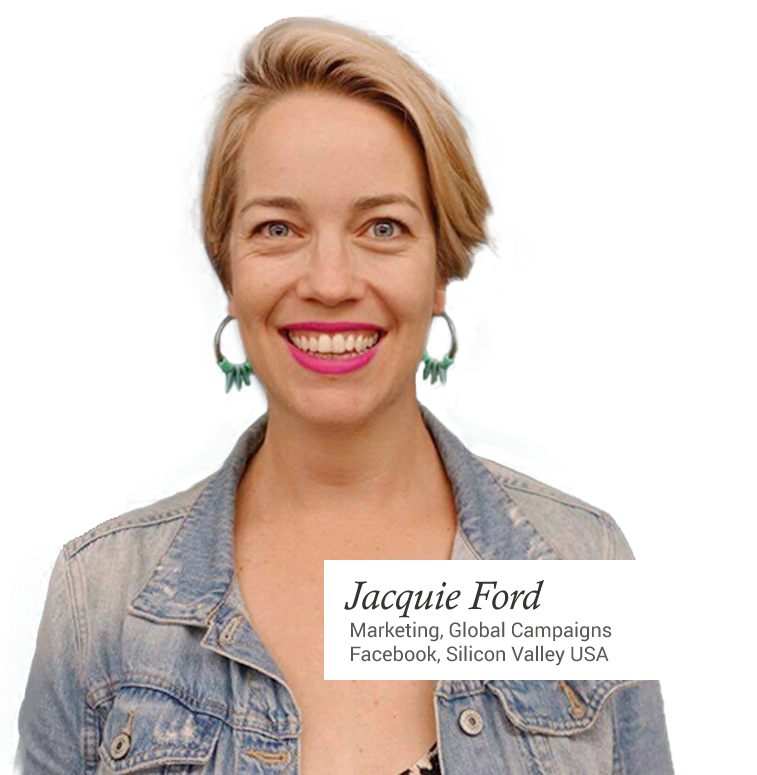
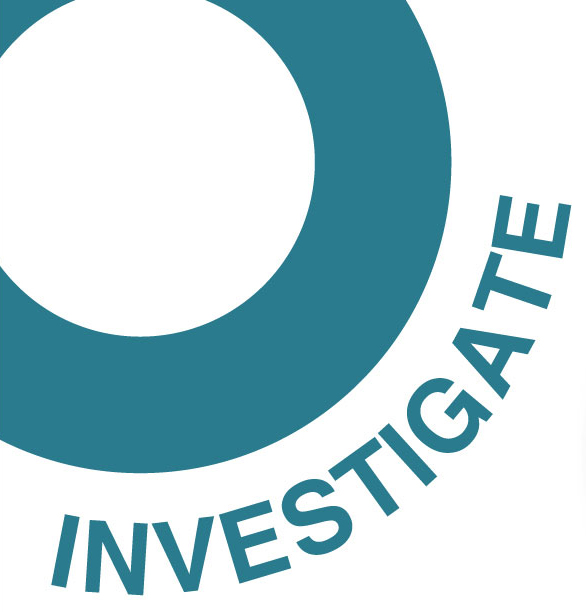
THE INVESTIGATOR PROFILE
-
Innovation Role – Providing analytical thinking and objectivity
-
Mindset – Critical
INVESTIGATOR'S Strengths:
-
Systematically researching, analysing and assessing ideas
-
Making sure ideas are useful, not just novel
-
Understanding the importance of testing and validating ideas before moving into implementation
-
Being willing to test their thinking with customers and stakeholders
-
Creating a culture where exploration and questioning is encouraged
-
Encouraging other people to think things through carefully and systematically.

The image illustrates the mindset of Investigate, Critical. The swirls, whilst still exploratory, start to converge and be more analytical in approach.
INVESTIGATOR’S CHALLENGES:
Being analytical is one of the strengths of an INVESTIGATOR, but sometimes their strengths can backfire.
-
They may continually search for more validation before they are willing to make a commitment. This can lead to a new initiative getting immobilized or stuck
-
They can get lost in the detail and lose sight of the bigger picture; why they are innovating and the overall PURPOSE
-
They can be dismissive of ideas if they don’t think they are feasible, being too quick to judge something that is untried or tested.

-
As an INVESTOR, I am always evaluating the potential return (RoI) against the risk involved. I look critically at the key assumptions that support a given business-case, take off 50% and evaluate if it still makes sense.
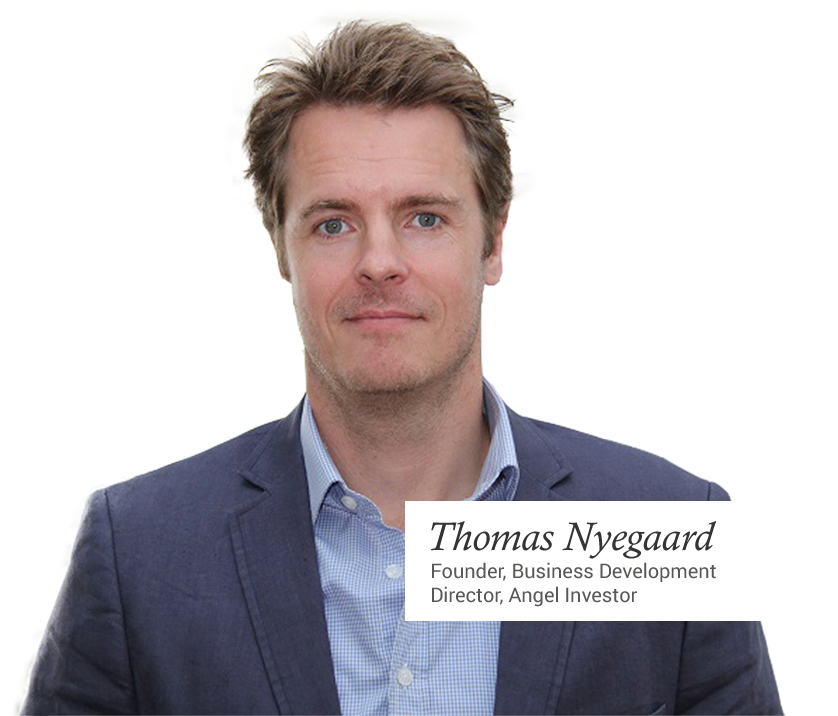
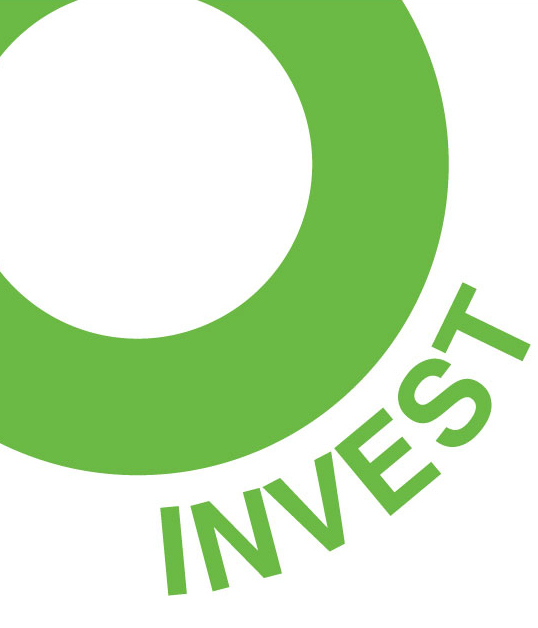
THE INVESTOR PROFILE
-
Innovation Role – Providing pragmatism, decision making and influence
-
Mindset – Courage
INVESTOR'S Strengths:
-
Being good at taking into account complex information and being able to make decisions
-
Understanding whether a business model might work
-
Being able to keep cool and make decisions despite difficulties
-
Can sense where and when resources should be provided
-
Influencing other organisations and people to create partnerships
-
Having the courage to take a risk.
INVESTOR’S CHALLENGES:
INVESTORS need a good combination of logical and pragmatic thinking, with a willingness to follow their hunches and take a risk. These are often difficult skills to combine. Some barriers can include:
-
The need to ask for information that might be hard to quantify, which can slow down decision making
-
Not allocating separate funds outside normal day-to-day business requirements
-
Having too many conflicting demands on limited resources
-
Failing to help others grow in their ability to influence and becoming a ‘bottle neck’ in making things happen.

-
As an IMPLEMENTER, I am able to break a vision down into sizeable chunks and prioritise what needs to be done, so that we can build something that will be sustainable.

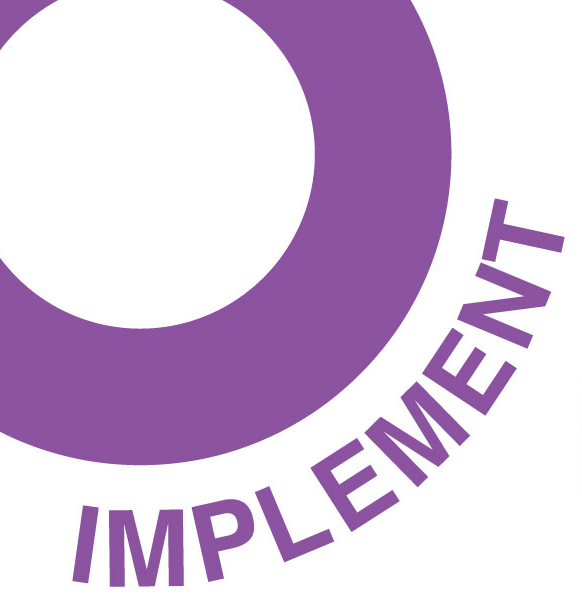
THE IMPLEMENTER PROFILE
-
Innovation Role – Providing management, focus and discipline
-
Mindset – Commitment
IMPLEMENTER'S Strengths:
-
Being good at planning and organising
-
Making things happen
-
Managing risks
-
Motivating others to achieve results
-
Building alliances and partnerships
-
Allocating and managing resources
-
Building and managing strong teams.
IMPLEMENTER’S CHALLENGES:
IMPLEMENTERS like to get things done, and tend to be practical and focused, and action orientated but they can:
-
Sometimes jump into action too quickly
-
Not allow time for investigating the feasibility of an idea
-
Lose sight of the innovative aspect of what they are trying to achieve
-
Get caught up in operational issues and lose sight of the bigger picture.

-
I am an IMPROVER. I work well with what already exists rather than coming up with new ideas. Improving on what exists can create more value quickly.
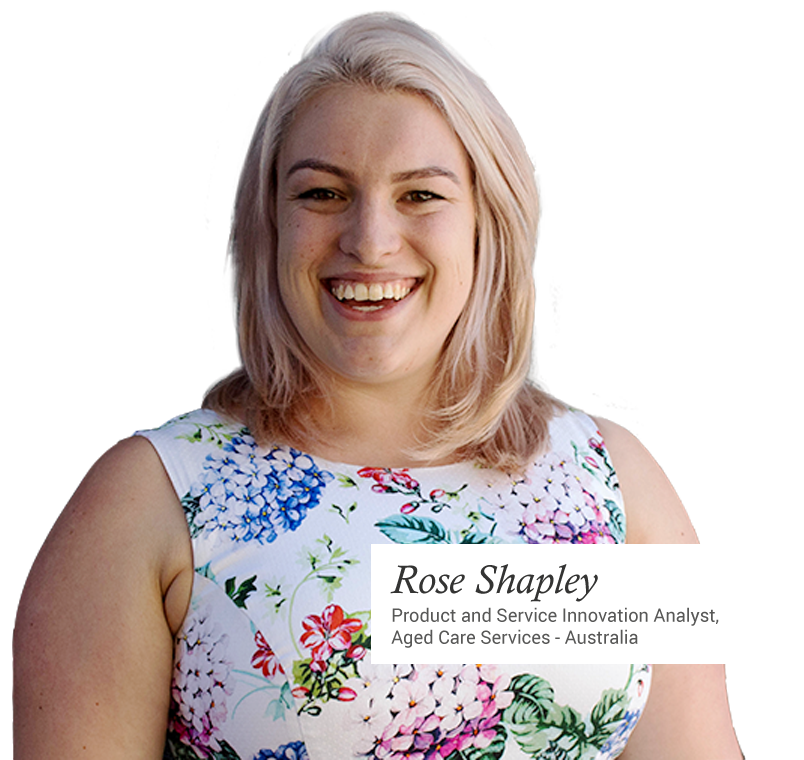
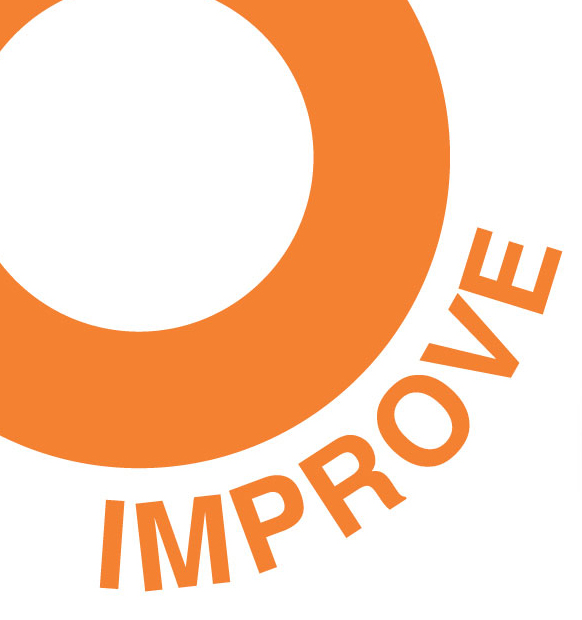
THE IMPROVER PROFILE
-
Innovation Role – Providing fresh perspectives, the ability to optimise and learn
-
Mindset – Clever
IMPROVER'S Strengths:
-
Being good at generating many ways to make an idea better
-
Being open to gathering feedback from customers, people, or stakeholders
-
Reviewing and assessing what has worked and why or why not?
-
Capturing learning
-
Learning from failure
-
Scaling an idea into other areas of opportunity.
IMPROVER’S CHALLENGES:
As IMPROVERS largely work with what is, rather than what could exist, they may:
-
Find it difficult to imagine completely new possibilities, and may need the support of an IGNITER
-
Rely on continuous improvement
-
Miss opportunities for more radical ideas
-
Be fearful of moving too far away from the knowledge of what they think will work

The Six ‘I’s® helped me to integrate the often disparate tools and approaches around how to innovate into a comprehensive Model. It combines the measurement of individual and team skills with a clear process on how to create and implement new ideas. I can both ‘dial up’, how I apply it, in leading more radical innovation projects, and ‘dial it down,’ in supporting the business on more day-to-day innovation and continuous improvement.

The Six ‘I’s® Of Innovation
CERTIFICATION & MEMBERSHIP COMMUNITY
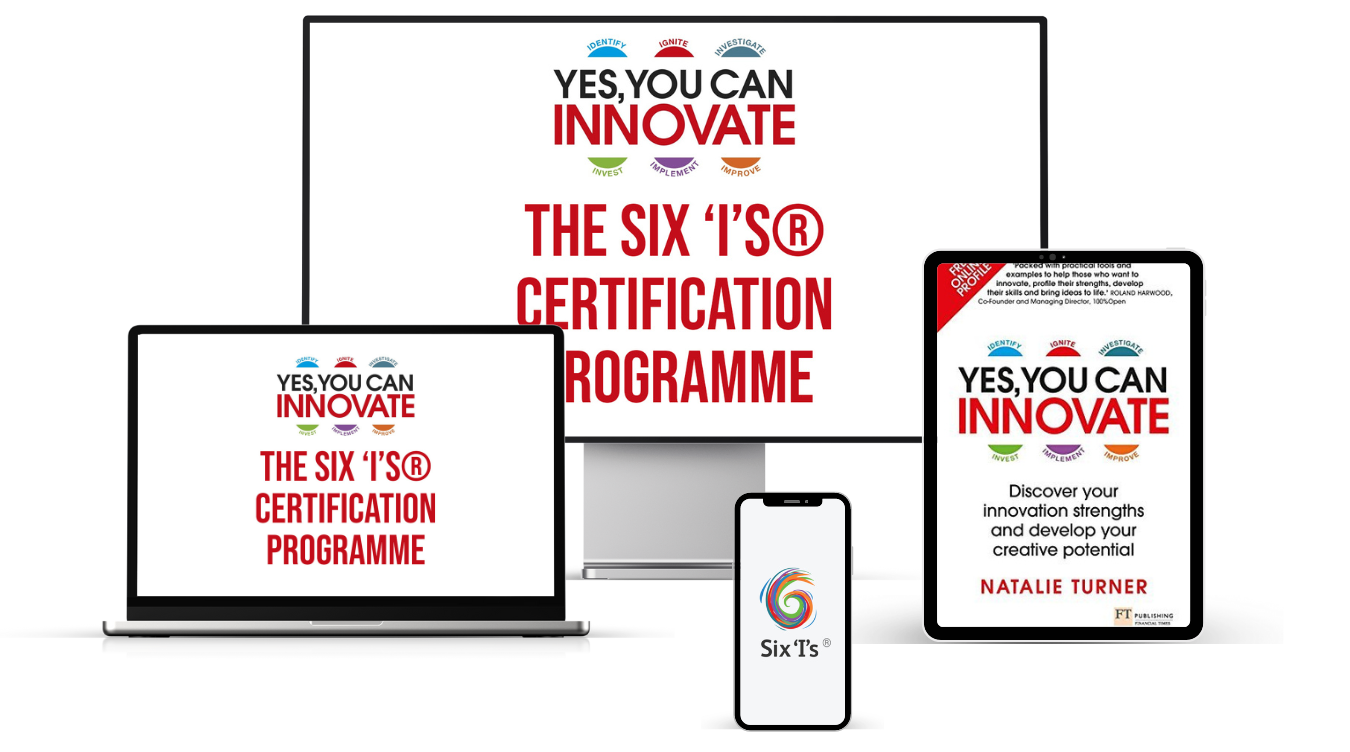
ONE TIME PAYMENT
One off payment of €2,950 which includes:
Level One
Level Two
Six 'I's® Community Membership Calls
Additional bonuses (worth €2,850)
Save €295 with a one time payment
€2, 950
ONE TIME PAYMENT
FLEXIBLE PLAN
5 monthly payments of €649 which includes:
Level One
Level Two
Six 'I's® Community Membership Calls
Additional bonuses (worth €2,850)
€649 /mo
5 MONTHS PAYMENT PLAN*
*These prices apply only to direct purchases from this website.
*An extra 10% is added to the payment plan to cover administrative charges.
© Copyright . All rights reserved The Six 'I's® From 2009-2023.
The 6 'I's® is a brand of The Entheo Network. Registered Address 75, High Street, Singapore, 179435. Company No: 201016398E
